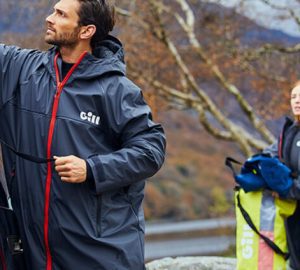
2Swim4Life 2019
Last weekend, Guildford Lido once again hosted 2Swim4Life, as it has done every other year since 2011. I’ve been to all of them, although I’ve only taken part in the last two, both times in a relay with two other swimmers. This year we had an Outdoor Swimmer team for the first time, consisting of Jonathan Cowie, Joanne Jones and myself. I think it is one of the best events on the swimming calendar, for all sorts of reasons.
Firstly, 2Swim4Life is a massive swimming and endurance challenge for those who take on the full 24 miles, and one that comes at a fraction of the cost of most marathon swimming challenges. The aim is to swim a mile every hour for 24 hours. After you’ve completed each mile, you’ve got whatever time remains in that hour to warm up, eat, rest, go to the toilet and update your social media profile. I’m in awe of the resilience and determination of everyone who took on and completed the swim. I’m not sure I could do it.
It’s not just the swimming that makes this event so tough (although 24 miles is a long way to swim). The water temperature, at around 20 to 22 degrees, is warm enough that most people can comfortably swim a mile, but cool enough that you start to lose heat. Particularly in the night when air temperatures drop (some years it’s been close to freezing), it becomes hard to warm up again between swims. The cumulative effect of repeated swims followed by incomplete rewarming means hypothermia is a definite risk. This year, we were blessed with a heat wave, slightly warmer than usual water and a mild night, but even so, keeping warm was a challenge. On top of that, by three in the morning, you are physically exhausted and sleep deprived, which makes it even harder to warm up.

Team Outdoor Swimmer. Pictures by Katia Vastiau
For those, like me, that find the full 24-hour thing too much of a challenge, there is the option to do the swim as a relay. As a team of three, we still had a substantial eight miles each to swim but benefited from about two and a half hours between each mile. Other popular combinations are teams of two and four, and there was at least one team of five. I really like the relay option as you have time to relax, chat to other swimmers and enjoy the atmosphere.
And what an atmosphere! It starts with a buzz of anticipation on the Friday evening when swimmers arrive and set up tents for the following day. (Not: There is no camping allowed at the lido. Swimmers use the tents as a base to return to between swims.)
After setting up, swimmers disperse and return for registration at eight in the morning the next day. The anticipation intensifies as the time approaches nine o’clock when, after a countdown, swimmers start the first mile to a cheer and a party mood ensues, supported by a selection of 80s chart hits.
Given the amazing weather we had this year, the festive feeling lasted throughout the day. Swimmers and their supporters settled into their routines and used the time between swims to top up tans and mingle. The mood changed as the sun set. Dusk brought a chill, which meant swimmers now needed to be more efficient with their between-swim routines to ensure they didn’t get cold. As darkness fell, the music was turned off and the mood became one of quiet determination which slowly gave way to dogged resilience in the early hours.
With dawn comes the realisation that the end is in sight. While it’s still cold, the sun lightens the mood and excitement builds. The last mile is one for celebration, not racing. Swimmers wait for the others in their lane so they can finish together. Some do a final few strokes (or even a full 50m) of butterfly. Swimmers and supporters hug. Tears are shed, and nearly everyone, it seems, waited for the final swimmer to finish and cheered her all the way to the wall.
Then they vow never to do it again, but you know that many of them will.








